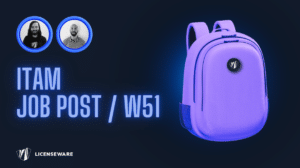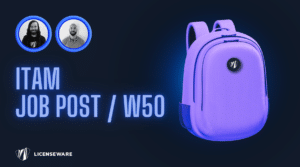The Best-Kept Secret is Out: Red Hat Confirms No-Cost RHEL is for Businesses Too

In a move aimed at clearing long-standing confusion and countering the rise of community-driven clones, Red Hat has explicitly clarified its stance on the use of its no-cost Red Hat Enterprise Linux (RHEL) subscription. For years, a “best-kept secret” among savvy IT professionals was that the free “Red Hat Developer Subscription for Individuals” could be used for more than just personal projects.¹ Red Hat is now dispelling the fog, confirming that this subscription, allowing for up to 16 systems, is perfectly permissible for small-scale business and production use. This is a significant strategic maneuver in the ongoing battle for the enterprise Linux market.¹
The “fear, uncertainty, and doubt” (FUD) surrounding the use of the developer subscription by businesses has been a persistent issue. The very name suggested it was a tool exclusively for individual developers tinkering on personal projects. This confusion created a significant opening for RHEL-compatible distributions like Rocky Linux and AlmaLinux, which offered a clear, unambiguous, and free path for businesses that needed a stable, RHEL-like environment without the cost of a full support subscription. Red Hat’s clarification is a direct challenge to this narrative, essentially asking the market, “Why use a clone when you can use the real thing for free?”¹
What the No-Cost Subscription Actually Offers
The Red Hat Developer subscription for Individuals provides access to RHEL at no cost. Under its terms, an individual can register up to 16 physical or virtual nodes.⁵ Crucially, Red Hat has now officially confirmed that these systems are not restricted to development and testing; they can be used to run small-scale production workloads.¹ This is a game-changer for startups, small to medium-sized businesses (SMBs), and development departments within larger corporations. It allows them to build, test, and deploy applications on a genuine, production-grade RHEL platform from day one, without incurring any licensing costs. This ensures a consistent environment from development through to production, eliminating the potential issues that can arise from developing on one OS and deploying on another.
To further streamline this, Red Hat has also launched a new offering in July 2025, “Red Hat Enterprise Linux for Business Developers.” This program, also at no cost, is specifically aimed at business-focused development teams and expands the allowance to 25 instances.³ ⁵ It underscores Red Hat’s commitment to making genuine RHEL more accessible within corporate environments, aiming to reduce friction between development and operations teams.³
The Critical Caveat: The Price of “Free” is Self-Support
While the software itself is free, both offerings come with a critical distinction that businesses must understand: they are self-support subscriptions. This is the fundamental trade-off. Users of the no-cost subscriptions get access to the full RHEL software, including all updates and security patches, through the Red Hat Customer Portal.⁵ They also have access to a wealth of knowledge base articles and community forums where they can seek help from peers.¹
However, what they do not get is official, one-on-one technical support from Red Hat’s engineers.¹ If a critical issue arises on a production server, there is no support ticket to file, no phone number to call, and no service-level agreement (SLA) guaranteeing a response. The responsibility for troubleshooting and resolving problems rests entirely on the user’s internal expertise or their ability to find solutions within the community. This contrasts sharply with a standard paid RHEL subscription, where the primary value is not just the software, but the enterprise-grade, 24/7 support that comes with it.
A Strategic Play in the Enterprise Linux Wars
This clarification is not happening in a vacuum. It is a direct and strategic response to the market dynamics that followed Red Hat’s controversial decision in 2023 to limit public access to RHEL source code. That move, intended to protect Red Hat’s intellectual property and business model, angered many in the open-source community and fueled the momentum of RHEL clones.¹
By loudly proclaiming that RHEL itself is available for small-scale production use at no cost, Red Hat is attempting to recapture the segment of the market that flocked to these alternatives. The strategy is clear: bring users into the official Red Hat ecosystem early. As Gunnar Hellekson, Red Hat’s VP and general manager of RHEL, stated, the goal is to give developers “direct access to the world’s leading enterprise Linux platform without having to move through centralized IT channels.”³ A small business that starts on a no-cost RHEL subscription is far more likely to convert to a paid, fully supported subscription as it grows and its need for official support increases. It is a classic “freemium” model applied to the enterprise OS, designed to build a pipeline of future paying customers.
This move provides more choice and transparency for businesses. It allows organizations to make a conscious decision based on their budget, technical capabilities, and risk tolerance. For those with the in-house expertise to manage a self-supported environment, the no-cost RHEL subscription is now an officially sanctioned and highly attractive option. For others, the value of guaranteed, enterprise-grade support from Red Hat will remain a critical investment. The secret is out, and the enterprise Linux landscape is all the more competitive for it.
Sources
- The Register (July 10, 2025) https://www.theregister.com/2025/07/10/rhel_business_developers/
- Red Hat Launches No-Cost Enterprise Linux Offering for Business Developers — ADTmag (July 16, 2025) https://adtmag.com/articles/2025/07/16/red-hat-rhel-for-business-developers.aspx
- Red Hat is giving developers free access to RHEL – here’s what you need to know – ITPro (July 11, 2025) https://www.itpro.com/software/operating-systems/red-hat-is-giving-developers-free-access-to-rhel-heres-what-you-need-to-know
- Red Hat Enterprise Linux’s evolution at Summit: 12 essential reads (July 9, 2025) https://www.redhat.com/en/blog/red-hat-enterprise-linuxs-evolution-summit-12-essential-reads
- Red Hat just expanded free access to RHEL for business developers | ZDNET (July 9, 2025) https://www.zdnet.com/article/red-hat-just-expanded-free-access-to-rhel-for-business-developers/









